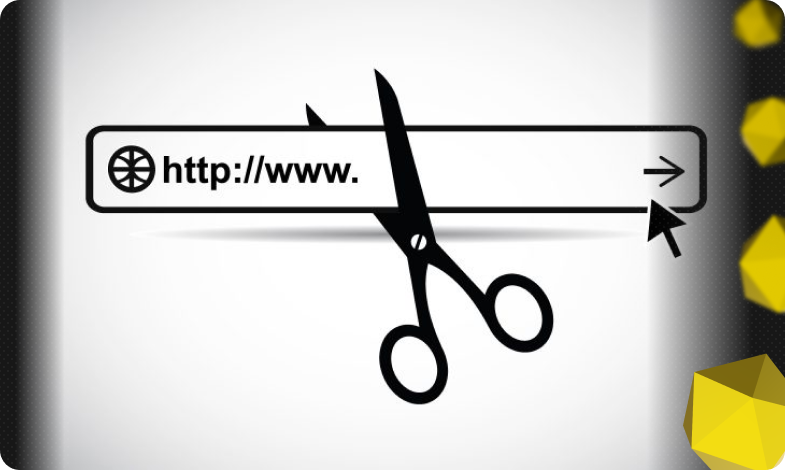Content of the article

Recommendations for image optimization are like God’s commandments:
- there are about 10
- all SEO specialists know about them
- it would be nice to keep them
- neglected by most
The most illustrative example is the presence of a lot of completely unoptimized images in an article about image optimization on the next SEO-oriented resource. In turn, this causes justified indignation in the comments of especially attentive adherents, who appeal to the authors to follow their own recommendations.
In this article, we will try to understand the most popular misconceptions related to image optimization, as well as consider useful features for this promotion vector.
Picture Optimization Emphasis
As expected, before writing this material, we studied many articles, including from the most authoritative sources. Most of them gave exhaustive answers to all questions directly related to the optimization process, revealing the technical side of the issue in as much detail as possible. In pursuit of the novelty of the material, some authors added such indirect ideas to their texts that an unprepared person can simply get confused in the very concept of “optimization” of images.
However, none of the articles provided answers to more fundamental questions. For example:
Is it important for every site to focus on images?
How can I choose from all the recommendations that will help in my particular case?
How to properly track the performance of this work?
Due to the fact that such material is for informational purposes and is aimed at novice SEO specialists or site owners who plan to figure out all the nuances on their own, I believe that it is worth starting with the disclosure of theoretical issues.
Influence of the site theme on the problem statement
The first thing I want to pay attention to is the direction of the site for which it is planned to optimize images.
|
If a site is service-oriented, images don’t have as much value as projects that sell specific products |
But in this case, not everything is so clear:
It is unlikely that when searching for a service, the user will look for the answer in pictures. Therefore, for such projects, it makes no sense to place a high emphasis on image optimization. For example, no one searches for the services of a lawyer or a private doctor in the “pictures” section, but here is to make a request for a specific full name. doctor, lawyer, etc. the user can with a fairly high probability, so it is important that he can find the appropriate image.
Another type of sites where image optimization has an auxiliary function is information sites or article sections of commercial sites. In these cases, pages are built entirely from the text component, and images only help to create an associative array or visualize complex processes described in words.
I think it’s not a mystery to anyone that the probability of getting targeted traffic to an informational article through image search also tends to 0.
The exception may be those informational articles in which the visual component is dominant. For example, texts about painting.
| The most relevant option for focusing resources on image optimization is commercial product sites. |
Most often, it all comes down to the standard optimization of product cards (more on that below). This approach shows itself most useful when working with a narrow-profile product or items that are seasonal in nature.
However, everything should not be summed up as template examples, because sometimes it is possible to get good image traffic even on the most unexpected pages.
Example:
Consider, using a real example of an online store selling toys, getting traffic from image search:

Top search queries by imagem
I want to note that the first 2 pages are articles from the blog, only the third is the product itself. An interesting feature of this situation is that the pages were created for detailed descriptions of cartoons in order to attract some additional traffic for non-commercial search queries. Due to the fact that high-quality images were selected, which were further minimally optimized, we received good traffic from images alone.
How to find website traffic from image search
Most SEOs do not pay enough attention to segmented traffic analysis from image search, combining this data
So how do we know how much traffic we are getting from this organic channel segment?
To do this, we need the Google Search Console tools.
Statistics from Google Search Console
To find out the amount of traffic that the site receives exclusively through image clicks, you must first select the performance report (1):

Next, select the type of search “image” (2):

The most useful feature is the view of statistics down to each request:

This data helps us to conditionally understand how high the CTR is for each individual key.
If you need to evaluate the effectiveness of impressions by a group of pages or products, simply add the corresponding segment in the condition:

It should be remembered that in addition to traffic, it is very important to analyze the behavioral indicators of users. It is possible that individual images are completely incorrect when displayed for certain queries, which does not benefit the overall site statistics at all.
Image optimization goal
As we wrote earlier, the image optimization process has different areas of work. All of them are useful in their own way, but let’s try to figure out which tasks are responsible for what.
Conventionally, all image optimization vectors can be divided into the following groups:
element
| Work direction | Task | Target | Relevance | Add alt and title | Allows the search engine to more accurately determine what exactly is shown in the picture and builds more accurate relevance when ranking in image search | Technical |
Add microdata (Schema, Open Graph) |
Allows the search engine to characterize the image as a certain type of content – product, recipe, video, and also displays a specific image for display in social networks | Image compression (weight) | It allows you to significantly reduce the loading time of the site pages (this parameter is one of the most important for SEO at the moment) |
Adaptation of images (dimensions)
Using the srcset |
Allows you to load several versions of images for devices of different resolutions. | Indexing | Adding an image sitemap | Allows search robots to correctly index images on the site |
SEO specialists most often resort to optimizing the weight of images and adding alt and title, since these works are considered basic and relevant for almost all sites.
|
We also recommend that you do these tasks first. |
Image Guidelines
Let’s try to give some important and useful recommendations for image optimization.
Process automation
We are proponents of manual work on most of the tasks related to SEO. However, when it comes to filling out thousands of alt and title attributes for product cards, you should still think about automating the process.
There are 2 options:
a) Buying an automatic module for the site
For example, for sites on CS-Cart, the “Images auto seo optimization” module is perfect, which will do all the “dirty” work for you.
b) Assign a task to the programmer to set up an auto-generation script
Example:
“Configure auto-generation of ALT and TITLE according to the template:
ALT:
<Page Title>
TITLE:
<Page Title>
Example – “website address”
ALT:
Two-room apartment in Kyiv 2010
TITLE:
Two-room apartment in Kyiv
Using the extended Alt attribute when working with products
When optimizing images for product cards, it is very important to specify the serial number of the product or its article in the alt attribute.
As statistics show, requests for articles and serial numbers, in certain niches, can make up the predominant share of all targeted traffic on the site, in their totality even overtaking the most high-frequency requests.
Selection of image format
We will not focus too much on this issue, because the analysis of it claims to be a separate article, which is better to read in the authorship of some web designer.
We offer a brief stop and analyze the most basic formats and their purposes:
JPEG is the most popular format. Ideal for photo. When compressing the weight, there is a clear loss of quality, especially in fine details.
PNG is a vector format. More focused on line drawings and texts.
SVG is a relatively new format, also designed for vector graphics. Most often used for logos and icons.
WebP is the newest format that was developed by Google and was limited to use in its own environment. Currently the fastest format, but only supported by Google and, more recently, Firefox.
If you are interested in a more in-depth analysis of the issue, we recommend that you study this article:
https://sdvv.ru/articles/internet-management/luchshie-formaty-izobrazheniy-dlya-veb-dizayna-i-razrabotki/
Unique images
Even if you can’t create 100% unique images for your site and use stock photos, you should make them more “personalized” for your site.
To do this, just crop the photo to change the composition a little or use additional effects in photo editors. This approach does not always guarantee that the search engine will accept the image as unique, but in most cases this is sufficient.
To summarize
Image optimization is an important step in both SEO website promotion and autonomous development of its content component. This process is quite multi-layered, so think in advance which of these “layers” you would like to take on first, but in no case do not neglect this aspect of promotion completely.
Remember: image search is gaining momentum more and more, especially in product niches. And where you failed to catch on to the main search results, you can always try to catch up with image search.







 27/10/2021
27/10/2021  3025
3025


